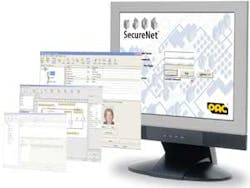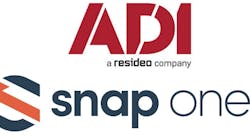Stanley Security Products will introduce the latest release of its popular PAC SecureNet software at IFSEC, complete with a number of significant new features and enhancements.
A completely integrated security solution that can be adapted to suit every conceivable access control installation, PAC SecureNet dramatically improves the security experience for all users, be they single site businesses or global, multiple location organisations.
The various new software features mean SecureNet 3.2 can be individually tailored to meet the specific security requirements of different applications. In a multi-tenanted building such as commercial offices, for example, where different organisation units (org units) are set up, it is no longer necessary for an operator, such as a landlord, to log out to change to a different org unit. Instead, using a drop down list in the administration software, they can select and move between different org units in a much quicker and more convenient operation.
In addition, operators can now undertake an advanced search for key holders across multiple org units, create access groups which are available to more than one organisation and assign a public area to key holders for more than one org unit.
Another enhanced feature is found within the software’s CCTV element. In the 'event log', each CCTV event is now listed with an icon representing the type of camera associated with that event. Within a live spreadsheet, operators can quickly spot CCTV events in the event log, for example a door that has been forced or left open, and can even, if available, double click on some CCTV events to play a 30 second video clip of the event.
CCTV integration has been further enhanced with the optional Dedicated Micros DVR add-on license, which integrates SecureNet with the popular Sprite 2 DVR range from Dedicated Micros.
Event log filtering has also been extended making it possible to filter within different categories of events, identity types and specified times, or display CCTV events only. Rather than just hiding or displaying filtered records, the event log can now display filtered records in different colours. Pre-programming of the software means a 'trace' can be put on an individual key holder and their colour-coded event movements isolated for closer observation. This feature can be useful in monitoring the comings and goings of specific staff within a commercial application, or, for example, to regulate ASBO control in a social housing setting.
Within the software’s Windows environment, tear off controls are now available in Alarm Viewer, Event Log and in Reports. By dragging, floating and resizing these controls they can all appear on the screen at the same time, a convenient way of assessing different data all at once and building up a more comprehensive picture of the security situation.
One final software feature that is likely to have major security implications is the ability of SecureNet to configure doors for visual notification. If a key holder presents them self at a door which is configured for visual notification, a pop-up window now appears within Alarm Viewer which shows information on the door, the key holder and their photograph and which can be cross-referenced with a live CCTV feed from the door.
If the key holder details do not match the visual identification of the person trying to gain entry, access can be denied. One of the benefits of this feature is that it can overcome illicit pass sharing, for example to gain access to a leisure centre on someone else’s card or to a sensitive, restricted-access document storage area in a commercial office application.
Based on Microsoft’s .NET platform, SecureNet’s modular and open architecture enables administrators to integrate increasingly sophisticated capabilities through flexible software extensions as security and access control needs change and grow. This latest 3.2 release continues to deliver a centralised access administration system that results in greater time and cost efficiencies whilst increasing the security of both a building and its occupants.


